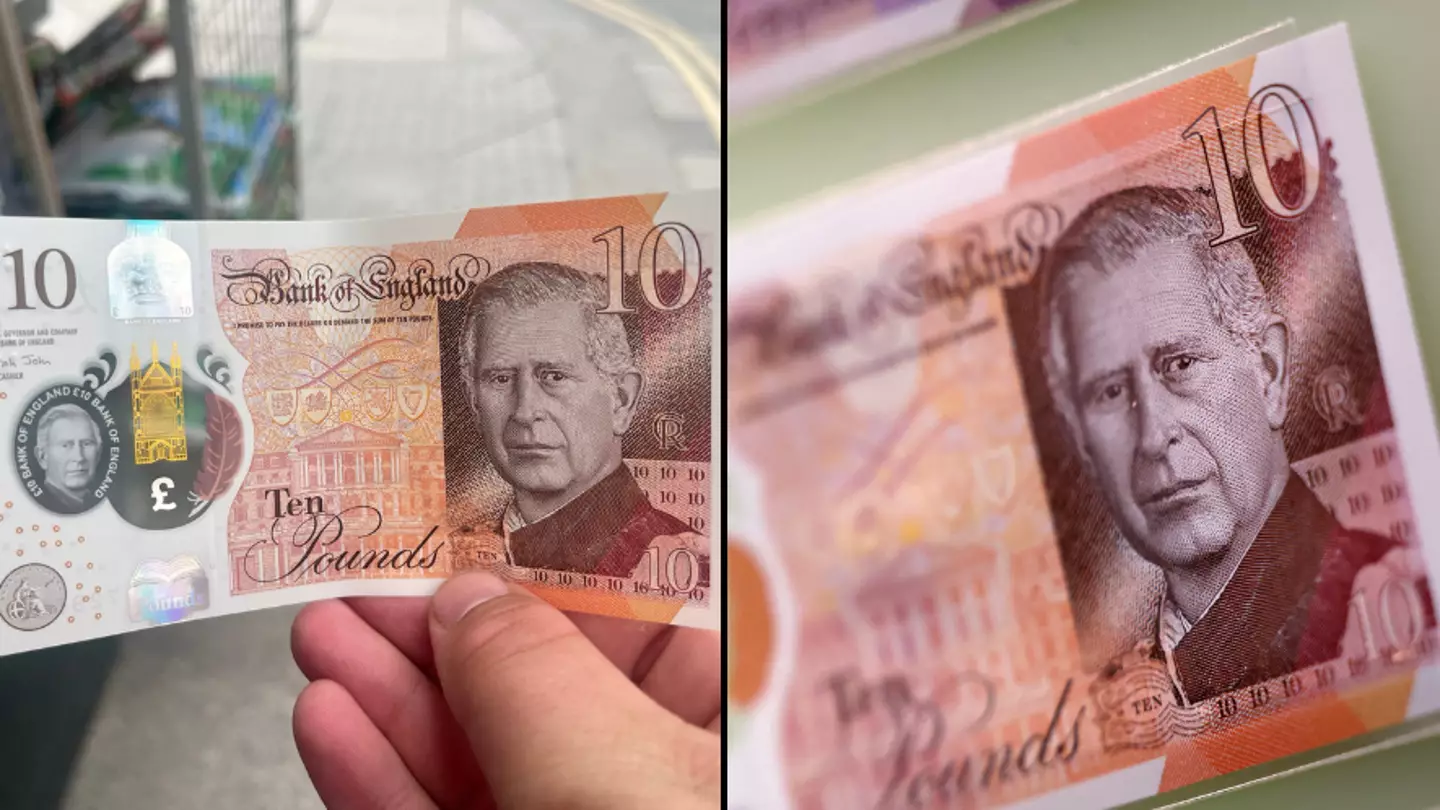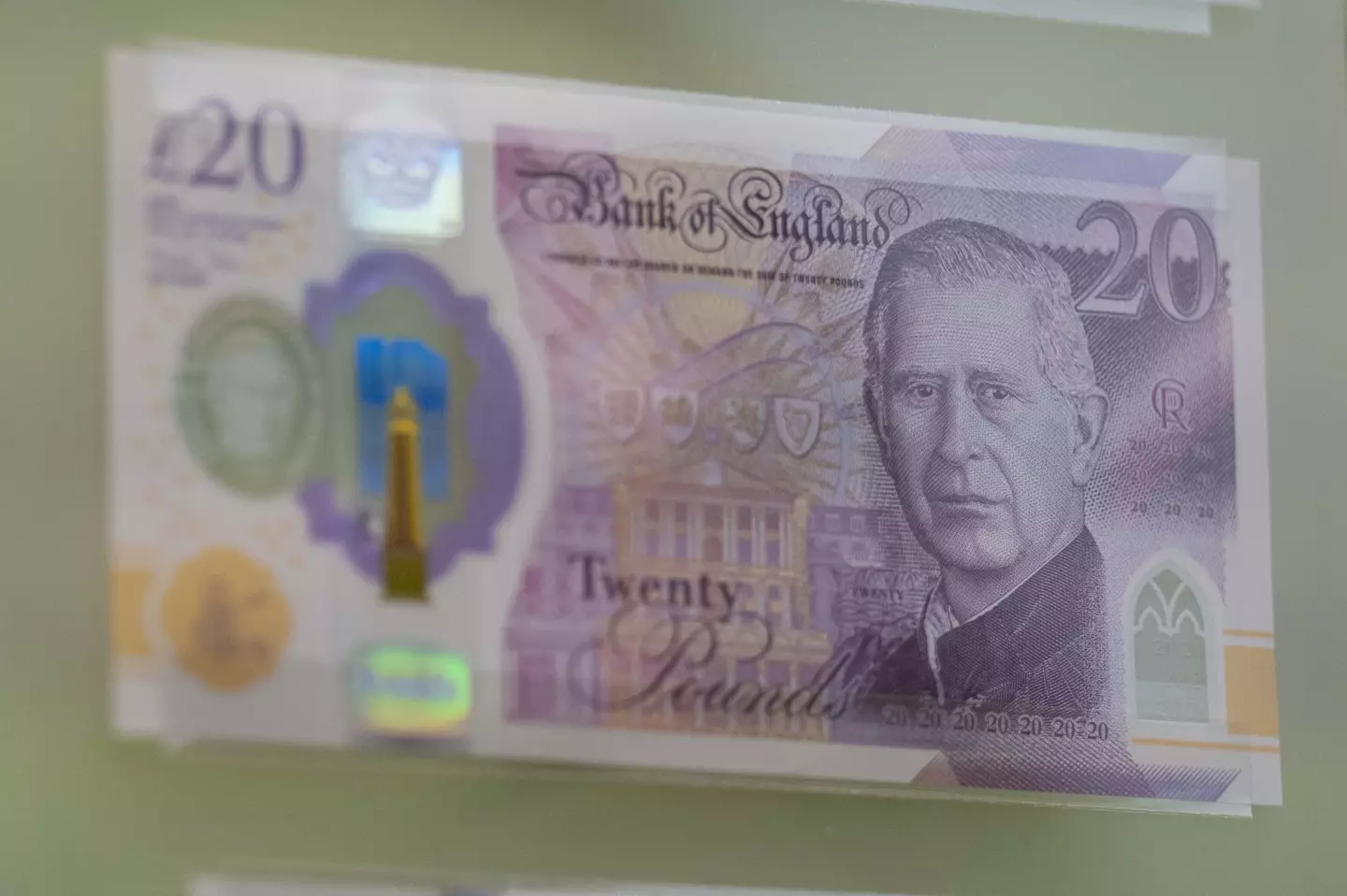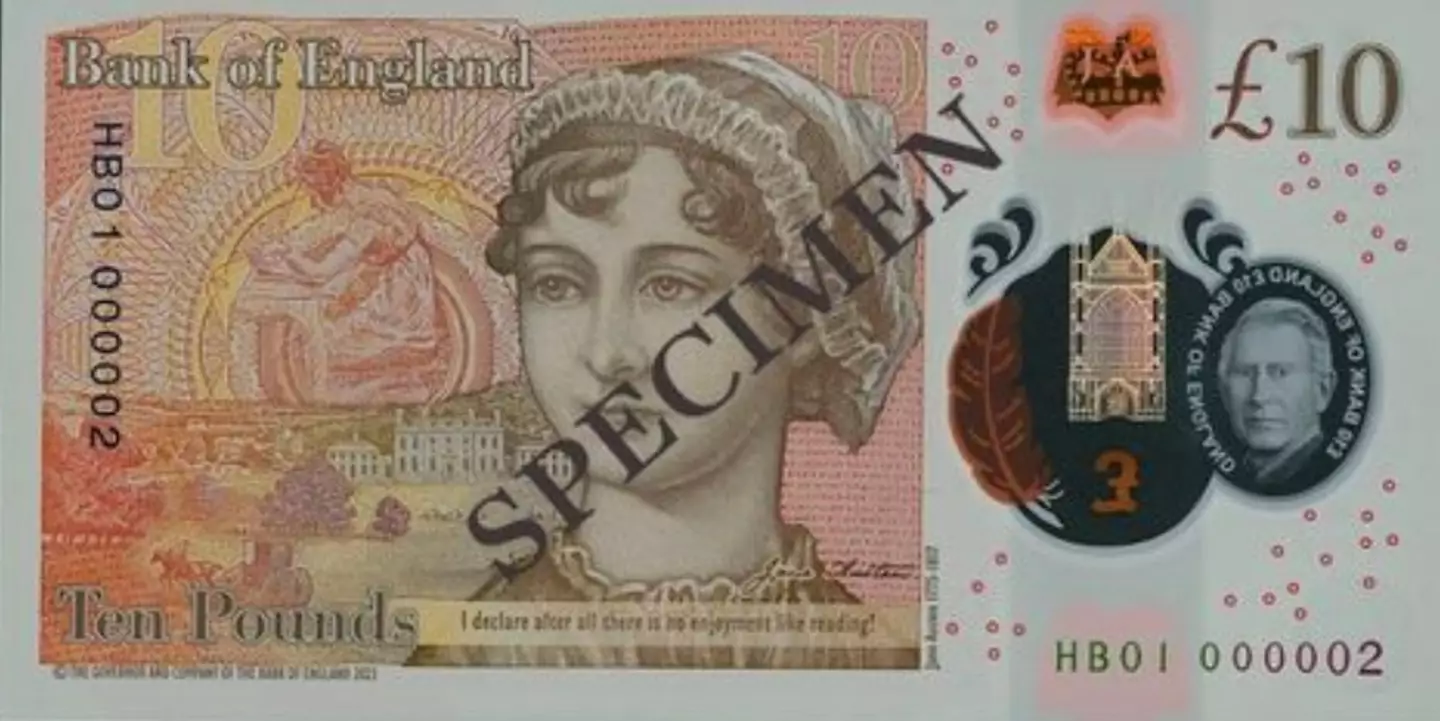
Be careful you don't crinkle your banknotes next time you're stuffing wads of cash into your wallet, as you could have one that's worth a lot more than the polymer it's printed on.
It's been a few weeks since the monarch on our money swapped from the late Queen Elizabeth to her son and successor King Charles on 5 June, but the buzz surrounding the latest update to our legal tender still hasn't died down.
That's because when the new notes entered circulation, people clicked onto the fact it's quite a historic moment in time for the UK and that certain ones would likely be worth a few quid to avid collectors.
A modern get-rich-quick scheme, if you will.
Advert
Anyway, the hunt is well and truly on for the profitable notes sporting King Charles' face on them, but it's seriously heated up since yesterday (27 June) after one ended up selling for a whopping £17,000 at auction.

This rare note - which was a tenner in this case - received a host of hefty bids at a charity auction which was organised by Spink and Son on behalf of the Bank of England.
So, what makes these specific banknotes so valuable and how can you spot if you have one?
Luckily, we've got the answers which might lead you to realise you've been sitting on a goldmine.
Advert
Similar to people who collect special edition coins, searching for new banknotes is actually a very lucrative hobby and legal tender which boasts certain serial numbers are prized possessions in the eyes of collectors.
Every £5, £10, £20 and £50 note has a serial number that also includes a four-digit prefix which refers to the date that it was printed, while the suffix ranges from 000001 to 999000, corresponding to the 999,000 notes printed.
But it's the ones which feature the prefix HB 01 that are worth a few bob - especially tenners.
You just need to have a good nosy at the bottom right hand corner of your King Charles notes to see if you could be laughing all the way to the bank.

Advert
The £10 note which fetched £17,000 at the Spink and Son auction had the serial number HB01 000002.
Although this prefix is the golden goose, there are still others which are worth something too.
The auctioneers sold off four other bank notes for thousands of pounds each, which had the following prefixes - HB01 000003,HB01 000004, HB01 000005 and HB01 000006.
These were smaller earners, with the highest being £5,500, but it's still a decent amount of dosh.
According to Spink and Son, the majority of people who purchase these notes are typically longtime collectors who don't intend to sell them on - but keep a close eye on eBay, just in case.
Advert
Brits should also keep an eye out for any notes containing the prefixes CA01, HB01, EH01 or AJ01, as these could also be worth a lot of money.
Topics: UK News, Money, King Charles III